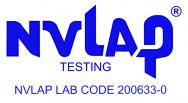Asbestos Services
EPA 600/M4-82-020 Method and/or EPA 600/R-93-116 Method
Polarized Light Microscopy (PLM) is the method most often employed for the analysis of bulk building materials. The light microscopy method utilizes the unique features of polarized light to observe mineral specific optical properties. In this manner, PLM can differentiate asbestos from non-asbestos fibers and further classify the various types that compose the asbestos mineral family. Moreover, the technique records the identity of the non-asbestos fibrous component(s) of each bulk building material sampled.
PLM results are reported as a percentage for each layer of the total sample. PLM utilizes a few protocols for the quantification process. These include visual estimation and point counting. Depending on the sample matrix, PLM analytical sensitivity can be a fraction of a percent. Other techniques can be used to further enable the identification of asbestos such as point count and gravemetrical reduction.
Download
EPA 600/M4-82-020 Method
At the customers request, a more accurate quanatative analysis of the sample can be provided by point count. This is usually done only for samples showing ten percent or less asbestos content but is most beneficial in low asbestos concentrations. Point Counting can be done with or without gravimetical reduction of the sample. The matix of some materials are not condusive to point counting.
Download
EPA 600/R-93-116 (EPA 600 Sec. 2.3)
This technique further enhance's the ability of the analyst to accurately quantify and qualify asbestos. This is espesially helpful in materials that are showing small amounts of asbestos or in very dense materials. The current method employed for this analysis is found in EPA 600/R-93/116. These results are reported the as a PLM Visual ID.



